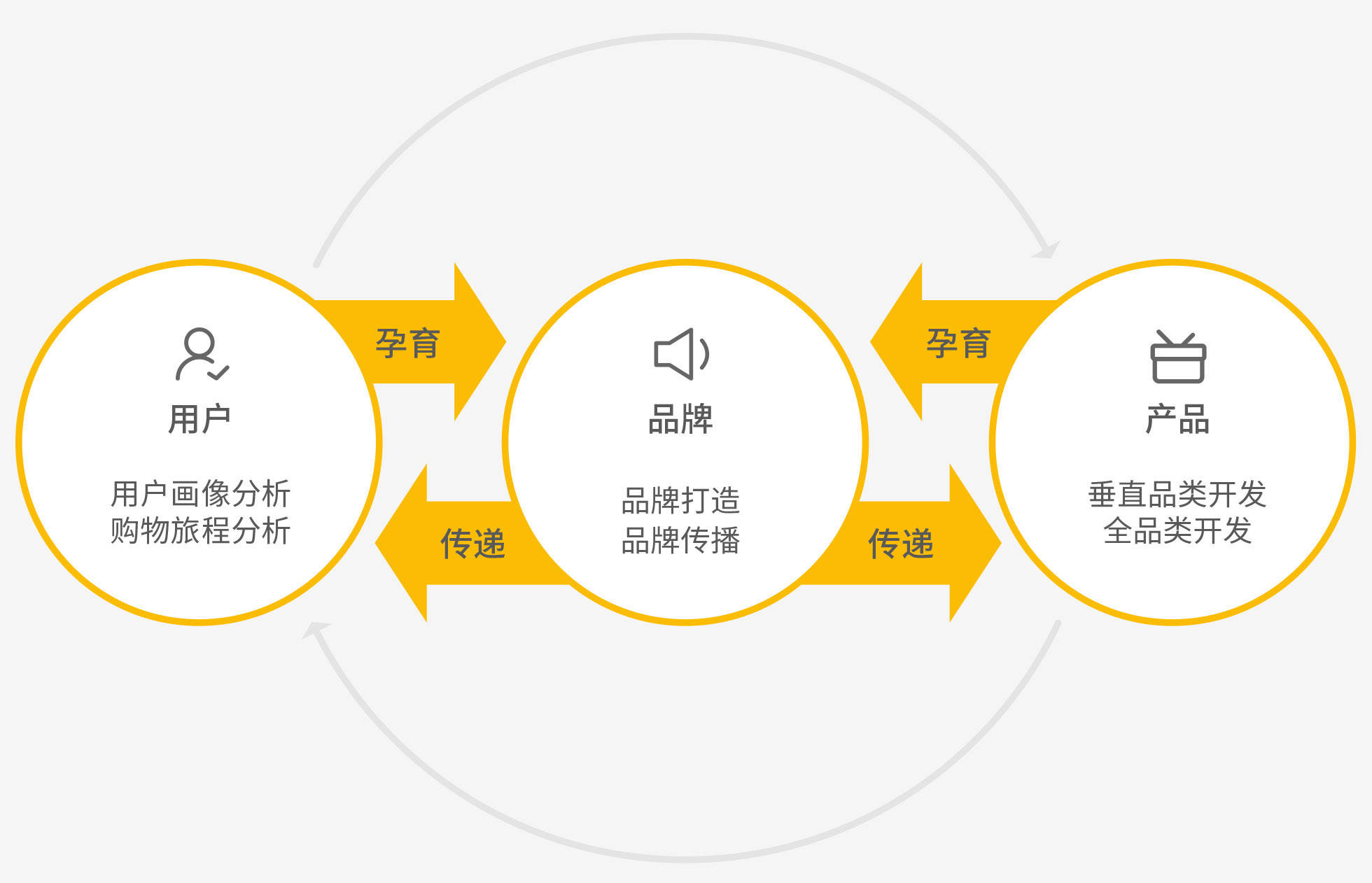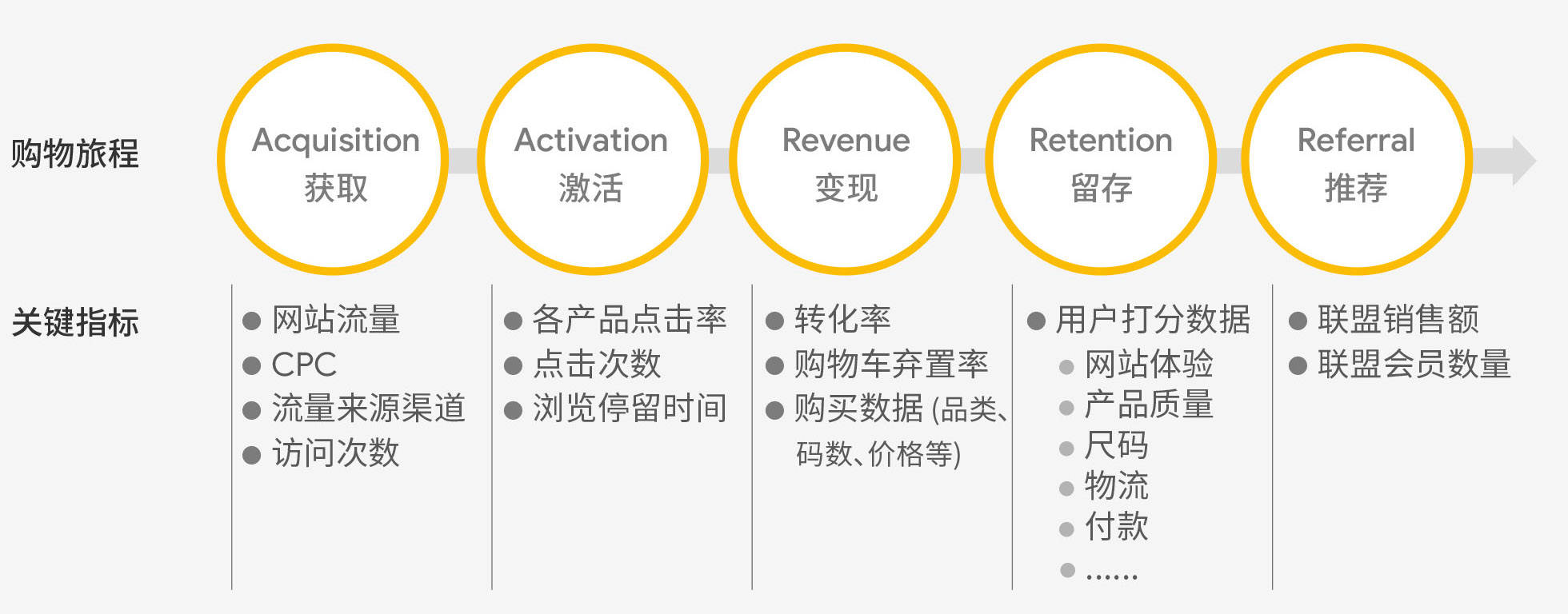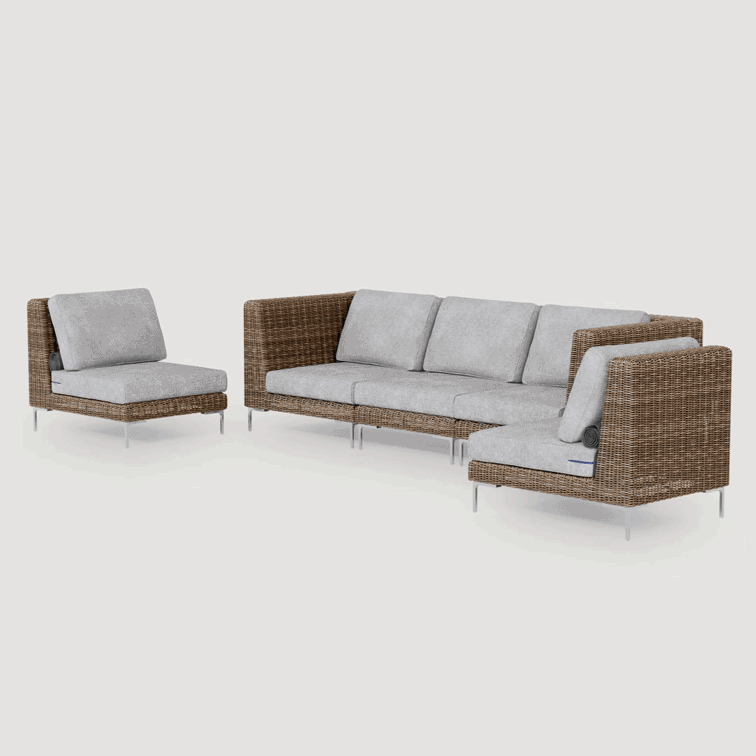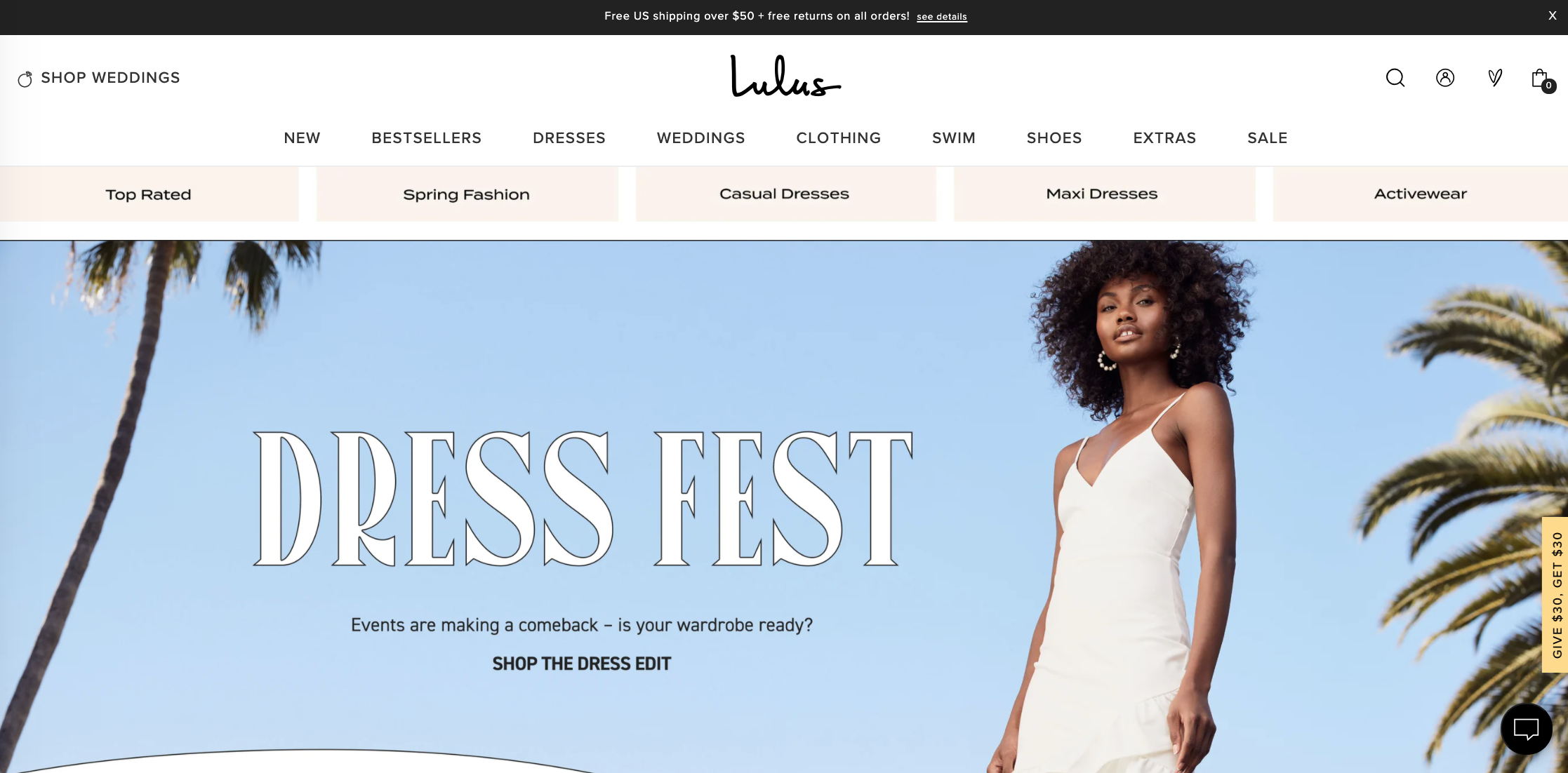Through the analysis of data, sustainable development can be achieved from the three-dimensionality of users, products and brands.
Today after the reshaping of the global retail industry structure, more and more overseas companies are aware of the necessity of brand transformation. In “Towards a new normal, how to transform cross-border e-commerce? “In this article, we focused on analyzing the current development trends, consumer behavior, and track changes of global cross-border e-commerce in 2020. As consumers mature in their minds, “user-oriented thinking” has become a development factor that cannot be ignored in cross-border e-commerce. To move towards sustainable development, Chinese cross-border e-commerce companies need to work together in the three dimensions of users, products and brands to meet the opportunities and challenges in the golden age of cross-border e-commerce.
Three development dimensions of users, products, and brands (picture source: “2021 China Cross-border E-commerce Development Report”)
01. Insight into user characteristics: take the road of refined operation
For cross-border e-commerce, how to meet the real needs of local consumers has become a task that must be completed. Because of the wide variety of consumer user groups, brands often cannot meet the requirements of all users. Therefore, for Chinese cross-border e-commerce, it is necessary to understand the consumption characteristics of users, collect and analyze all kinds of accessible user information, and understand the core Who is the user, and the related demands, can bring stronger vitality when cross-border e-commerce goes overseas to build a brand.
The “2021 China Cross-border E-commerce Development Report” (hereinafter referred to as the “Report”) shows that although some Chinese cross-border e-commerce companies have realized the importance of digital behavior analysis such as user profile analysis/shopping journey analysis, many The enterprise’s understanding of it still stays at the surface level, and GMV (Gross Merchandise Value, mainly refers to the transaction amount of the website) is still regarded as the main operation indicator in the operation process.
For China’s cross-border e-commerce, how to establish a comprehensive consumer profile and a fully dynamic path indicator system is an important part of brand building. Specifically, China’s cross-border e-commerce companies should think about how to use user data to effectively drive marketing, product development, and user lifecycle management and other business optimizations, so as to improve user experience and repurchase rates.
In progressWhen analyzing user portraits, you can mainly use internal research and external analysis tools such as Google to collect user portrait related data, and carry out targeted product development and marketing for this type of core group to achieve a clear brand positioning.
As one of the domestic fashion brands following the development process of China’s e-commerce, AMII has achieved relatively dazzling results in the early development process. However, the industry changed in 2017. Based on the consideration of the long-term development of the brand, AMII realized the importance of core user positioning for brand development. However, the user characteristics obtained through traffic are scattered, resulting in unclear user portraits of the brand at that time.
In 2018, the founder of AMII keenly discovered that the new middle class people pay more attention to “quality and cost-effectiveness” in fashion spending. In short, this type of consumer group has certain requirements for fashion taste, but their disposable income is also relatively limited, and they are more inclined to pursue “reasonable price and quality” when making fashion purchase decisions such as clothing. At the same time, the analysis of the industry made Chen Qingping notice that most brands in the industry have serious premiums, but their textures do not meet the needs of the new middle class. In this segment of the track, there is still a blue ocean to pursue.
After obtaining the analysis of the characteristics of the new middle-class population, AMII began to exert efforts in product development and marketing, combining Western art elements, retro trends and the minimalist style of the brand to create the 2020 Bright Renaissance Capsule Series, and at the same time art The elements are integrated into the brand promotion, marketing content such as micro-films are launched, and they are distributed through the main social channels of specific new middle-class people such as Xiaohongshu, so as to accurately cover the target population.
In addition to making efforts to locate target users, brands also need to analyze consumers’ shopping journeys, so as to better understand the important data generated by users in the process of consumer decision-making, and identify each key Touch points and indicators, to find the reasons for losing customers, in order to supplement the omissions in the process of brand building.
As an online fast fashion brand, Lulus continues to track changes in the core index of users’ entire shopping journey during the branding process, and increases interactive touchpoints with users in key links such as retention and recommendation. Lulus cleverly used external tools and customer service teams to track key indicators in the shopping journey, such as website traffic, product click-through rates, shopping cart abandonment rates, user scoring data, and affiliate marketing and membership numbers. These core indicators and their changes in the previous day/previous month/the same period last year are analyzed daily through meetings, so as to guide operations by tracking shopping journey data.
Lulus full shopping journey tracking indicators (picture source: “2021 China Cross-border E-commerce Development Report”)
At the same time, Lulus has added various touch points for interaction with users in key retention and recommendation links. In the retention link, Lulus promotes the retention of existing users by designing contact points such as membership plans and focus groups; in the recommendation link, it encourages users to help recommend brands through affiliate marketing.
If there is no refined positioning of user portraits and tracking updates of shopping journeys, cross-border e-commerce companies can easily go blindly chasing traffic and ignore the misunderstandings of user experience and needs. As Fan Xuncheng, general manager of the e-commerce industry of Google’s China Key Account Department, said, “We often say that users are first. All strategies and practices of a brand need to be developed around its target users. Today, the accessibility of user information is more accessible than ever before. Both are high. In particular, the Internet-native DTC (Direct-to-Consumer) brand has a natural advantage due to its direct-to-consumer feature. With the help of user data insights to conduct targeted operations, it is a successful cross-border e-commerce The only way for the brand.“
02. Feed back product innovation with user demand data
Products are the foundation for creating a brand with vitality and the most direct carrier to convey the brand concept. However, due to fierce market competition, the brand’s blind pursuit of explosive models has brought too many homogenized products, which not only caused a decline in user experience, but also caused companies to fall into a price war for a specific user group, which compressed the original vastness. Space for development.
In the long run, blindly chasing traffic explosions is not desirable, but actively creating explosions can write another story.
If we say that we are familiar with consumer habits in overseas markets, and refined redefinition of user portraits is the first step for cross-border e-commerce to transform towards branding, then based on the continuous in-depth understanding of all aspects of consumers, Data-driven innovation in the product dimension also needs to be put on the agenda.
“The product is the most direct contact between the user and the brand. The ability to adjust product design in a timely manner based on user feedback is the first step in building product power. A more advanced goal is that the brand can actively understand and meet consumer needs, Plan the product structure more forward-looking.” General Manager Fan Xiecheng mentioned.
Data-driven innovation in the product dimension mainly comes from two aspects: one is for vertical brands, by accurately locating the core pain points of users, and creating superior products with unique functions for this pain point. On the other hand, forFor brands of all categories, demand orientation and data insights can stimulate periodic updates of their product dimensions, plan the new cycle of products in a more scientific way, and create explosive models that can make users shine.
As a brand that is deeply engaged in outdoor sofa verticals, Outer aims to create unique and functional superior products by accurately locating users’ core pain points. In the opinion of the founder of Outer, in-depth research on users helped them define the core pain points of outdoor sofas that are easy to mold/stain, maintain unchanged, overweight and remain unchanged when moved indoors. Based on this, Outer began to think about how to break the existing dilemma, so that outdoor sofas can also be moisture-proof, mildew-proof, easy to store and other characteristics that are more in line with user expectations. After repeated product polishing several times, Outer finally incorporated a brand-new waterproof, moisture-proof and mildew-proof fabric and modular features into the product design, and developed the “OuterShell®” patents. ??????????????????????????????????????????????????????????????????????????????????????????????????????????????????????????????????????????????????????????????????????????????????????????????????????????????????????????????????????????????????????????????????????????????????????????????????????????????????????????????????????
OuterShell® patent (picture source: Outer official website)
The precise definition of user needs has brought innovation in product dimensions and also brought actual economic benefits. Outer’s brand-new products polished to user pain points have achieved sales of 800,000 U.S. dollars in the four months of launch, and at the same time gained brand reputation among users.
In addition to the driving force of innovation in vertical products, creating explosive models is also crucial for all categories of brands. At the same time, this is also one of the sources of cyclical innovation power for all-category brands after achieving refined user operations. In the view of Deloitte’s business strategy and research partner, Pu Qinglu, “refined and structured product labels are an effective way for brands to detect user needs. Brands can analyze the labels of hot-selling products and summarize the commonality of popular products. So as to create explosive styles in a targeted manner.”
As a full-category brand of fashion, AMII has carried out labeling analysis through industry big data, competing product data, and its own sales data, thereby driving the periodic planning and innovation of products through data. Every quarter, the number of AMII explosions will be controlled at around 5%-10%. By analyzing the common labels of hot-selling products each year, products are selected, and cutting-edge trend products created for users’ pain points will stand out and become “popular products.” This strategy gets rid of the price war caused by homogenization with the existing traffic models in the market, and at the same timeIt also brought up to 40% of the turnover for AMII. Not only that, AMII will launch brand-style “image style” products every quarter to deepen the brand loyalty and brand awareness of core users, and at the same time, it can also be selected as the “star style” through its unique style, increasing The positive exposure of the brand shows the brand tonality of AMII in multiple dimensions.
Whether it is a vertical brand or a full-category brand, updating and iterating products from user needs and data insights is a continuous output of brand tonality. The efficient linkage between the user dimension and the product dimension can have a positive effect on the establishment of brand recognition and loyalty, and it is also one of the power points that most cross-border e-commerce companies need to think and explore in the product dimension.
03. Build the “brand energy” of cross-border e-commerce
At present, the vitality that brand building can bring to cross-border e-commerce is continuous. While the products and users nurture the brand, the brand also needs to make efforts through the three aspects of brand story building, brand image presentation and brand communication, so that consumers can see products and services, and at the same time deepen their understanding of the brand. Trust and identity of brand culture.
Beyond cultural, consumer habits, and even language barriers, it has also made it more difficult for Chinese cross-border e-commerce companies to tell their own brand stories. What kind of concepts should be conveyed to potential users, and how to continuously enrich the core of the brand during development has become a threshold that many Chinese cross-border e-commerce companies need to pass.
There are two main ways to build a brand story: One is to build a brand story by highlighting the functional value of the product, focusing on the “practical” attribute. The other is to tell stories around product application scenarios and people, allowing consumers to see the “scene” and associate them with the spiritual core of the brand.
Because the product supply chain and manufacturing capabilities of the Chinese retail market are relatively excellent, telling brand stories through high-quality, affordable products is one of the advantages that China’s cross-border e-commerce can take advantage of. Lulus, a fast fashion brand from California, USA, has incorporated “to create affordable fashion for young women” into its brand genes. By priced most of its products below $100, it strives to provide consumers with “high-quality, affordable fashion”. Luxury”. Whether it is from the development of the brand, its price positioning and product selection, the products provided by Lulus are the best spokespersons for its brand. For consumers, the emotional connection between the brand story and the product itself, as well as the quality and price of the product itself, have become the reason for their trust in Lulus, and they have also added the label of “high quality” to the brand.
Lulus official website homepage (picture source: Lulus official website)
In addition to choosing to highlight the functional value of products to build brand stories, brands can also create and deepen brand impressions through product usage scenarios. Outer, as a vertical brand in the outdoor sofa industry, in order to talk about the spiritual value that the product can bring, the founder team, inspired by the Google Brand Sprint framework, began to dig deeper into the brand positioning.
Google Brand Sprint framework (picture source: “China Cross-border E-commerce Development Report 2021”)
Outer was not satisfied with just being a furniture company providing high-quality products when it was founded. They wanted to bring changes in the lifestyle of users through furniture design. By solving the important pain points that hinder users from enjoying home and outdoor life through superior functional products, Outer hopes to shift from outdoor sofas to the more imaginative “home and outdoor life” field to carry out long-term brand building, so that more people can enjoy returning to the outdoors. The joy of life (Bring life back outside ). ¹ And one of the cores of wanting to enjoy outdoor home life is the sustainable development and protection of the natural environment, so this is another core brand concept that Outer wants to convey.
Outer official website with pictures (picture source: Outer official website)
It’s not enough to have a clear brand story. The brand needs to be usedUsers actually feel the relatively abstract brand concept, which can be displayed through a unified brand material. Outer conveys the brand value of “sustainable development” through the text of the official website product introduction, and visually uses more life-like videos and pictures to show the state of outdoor life, so as to create a brand image of “outdoor life” . At the same time, brands can also develop brand communication through a combination of effect marketing and brand marketing to create more brand voice while diversion.
04. The “Sustainable Way” of Cross-border E-commerce
In the words of Du Lei, Director of Anker’s Digital Marketing Group, the branding of cross-border e-commerce is divided into three stages:
“The first stage is the channel brand stage. At this time, the brand is more of a means to help consumers judge good products and good services. The second stage is the brand improvement stage. Various channels collect the voice of consumers, and then convert it into an improvement of product development and consumer experience. The third stage is to achieve the stage of leading the brand, this stage can shift more to the brand’s global marketing.”
For most cross-border e-commerce companies, the establishment of the linkage of “user-product-brand” has been put on the agenda. But before building this sustainable business model, cross-border e-commerce companies also need to recognize their own corporate characteristics in order to seek more targeted transformation and upgrade solutions.
Click on the link to proceedBrand Incubation Diagnostic Analysis, and get exclusive enterprise type reports and optimization suggestions.
Data source:
1. Outer: From the ultimate single product to an imagination of outdoor home life | BrandStar interview, January 28, 2021
2. Google x Deloitte “2021 China Cross-border E-commerce Development Report”





